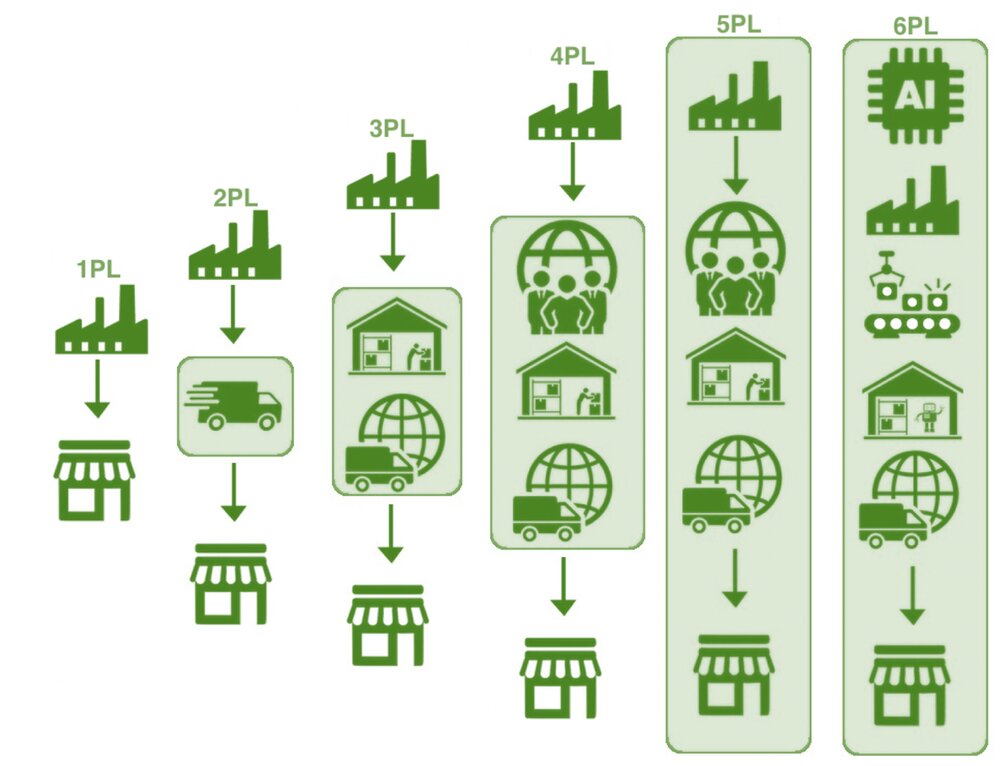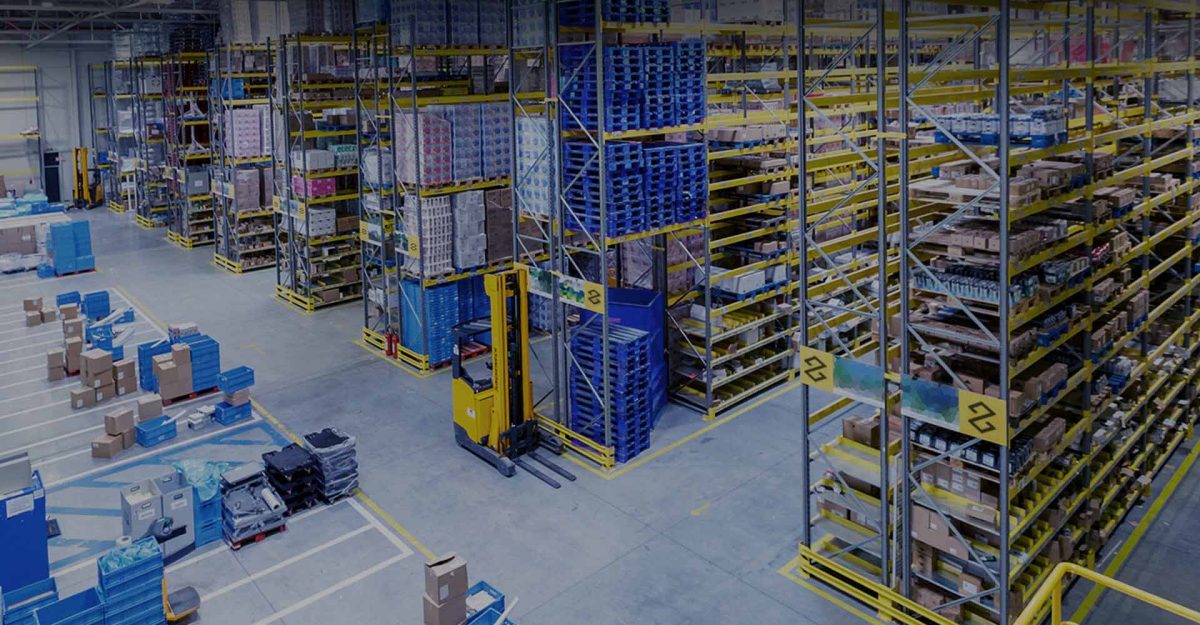For any online retailer or brand, there are many barriers to growth. These can be to do with the customer journey, human resources, product range, sales or marketing efforts. Often overlooked is the role of a business’s operational infrastructure as a means of enhancing the customer experience, minimising overheads, and expanding into new markets. By outsourcing eCommerce fulfilment, retail decision-makers can refocus their attention away from day-to-day order processing, to high-level strategy, new product development and competitor analysis. In this article we look at examples of third-party logistics in action, what it involves, how to find the right 3PL, and what the future holds for fulfilment centres.
3PL is the process of entrusting a separate business entity with the management of goods intake, warehousing and storage, picking, packing, and distribution of products to consumers. Increasingly, eCommerce 3PLs offer additional services that address different elements of the customer journey, and business operations, such as returns, delivery query resolution, outsourced call centre services, customs clearance solutions, bespoke packaging, and in the case of technology-driven 3PLs, inventory management technology.
3PL vs 4PL
Since the increasing complexity, and broadened definition of ‘3PL’, retail leaders are increasingly looking for ‘4PL services’. This is where an intermediary is deployed between retailer and 3PL; a separate company that orchestrates a single, but usually multiple, 3PLs on a client’s behalf. 4PLs often also manage deeper elements of the supply chain such as manufacturing, service outsourcing, and procurement of shipping contracts, packaging and raw materials.
Third party logistics (3PL) diagram – While 1PL refers to a retailer delivering its own goods, 2PL is when a retailer utilises a courier. 3PL adds the layer of fulfilment warehousing, and 4PL to 6PL adds layers of orchestration that becomes increasingly advanced in terms of scalability, contract length, depth of supply chain management, and implementation of advanced technology to achieve the leading competitive edge.

Third-party logistics locations
Deciding on the location of your chosen fulfilment warehouse(s) depends on your current and future ideal customers. This decision can also be influenced by your manufacturers’ locations, and customs clearance complexities. For example, a UK-based business will typically work with a domestic 3PL, but could face complexities if a large portion of their target market is overseas. By working with a mainland European fulfilment centre, a UK-based company can get better access to the EU market, tailoring each order specifically to meet the unique shipping regulations of each member country.
With expert outside help, you’ll be able to simplify cross-border distribution and improve delivery times. Transportation company owners like to click for logistics and shipping services that help them navigate customs procedures and optimise routes for international shipments. This guidance reduces delays and ensures compliance with varying regulations. In turn, businesses can maintain customer satisfaction while expanding their global reach.
How 3PL works
Once you’ve signed up with an eCommerce logistics provider, you will need to instruct your suppliers of your new fulfilment centre locations, and ship any remaining stock from your current warehouses. This stage also involves integrating your order management system (OMS) and sales channels, with the 3PL’s warehouse management system (WMS). Once your stock has arrived, the warehouse operatives will allocate your products in picking locations and assign stock keeping units (SKUs). As orders flow in, picking and packing notes are generated, and the picking team will collect the required products and take them to the packing bench for packaging, and application of the shipping label. When the shipping label is created, based on the dimensions and weight, your customer will receive a tracking number. The 3PL centre then groups each parcel by carrier, ready to be collected by their courier partners. Throughout the delivery journey, online shoppers will receive notifications and in-flight delivery options so that they can decide on delivery times, the option to leave a safe place, and photos of the shipment as it passes through the courier network, including ‘proof of delivery’ images.

Finding the right third-party fulfilment provider
Other than the obvious such as checking reviews and case studies, it’s important to assess 3PLs’ employee feedback, as this should translate to high performance. Order fulfilment pricing is complex, and constitutes a series of variables including storage, picking, packing and shipping fees, software costs, implementation and onboarding charges. To align expectations between retailer and 3PL, establish KPIs and OKRs based on quantitative metrics such as order processing speed, picking accuracy, on-time delivery performance and fulfilment costs, and qualitative metrics such as customer satisfaction and real-time user feedback based on customers’ shopping experiences; performance can then be monitored in real-time, and in periodical account management meetings.
Third party logistics for small businesses
While fulfilment outsourcing is popular and can accelerate ‘etail’ performance, some businesses are simply too small for both parties to benefit; 3PLs require minimum order volumes to be able to achieve the economies of scale to achieve efficiency over-and-above the SME simply working directly with a shipping partner. Some retailers actually rent out spare space inside their own warehouses, known as ‘micro-fulfilment’, which can be a viable option for retailers shipping only a handful of items per week. Retailers can also instruct their manufacturers to ship directly to consumers on their behalf, known as M2C (manufacturer-to-consumer). Most frequently, low-volume start-ups will work with an ad-hoc courier aggregator to access discounted shipping rates, but these may incur a collection charge for domestic orders. Some 3PLs will notice the potential in a start-up and onboard the customer despite low order volumes, if the retailer shows signs of potential for high growth.
The future of 3PL services
With demand for fulfilment services set to more than triple in size over the next decade, retailers will be inundated with choice, and 3PLs will face competition over the fertile and expanding battleground. Meanwhile, online shoppers will increasingly demand free and fast, yet environmentally-friendly delivery, and products to never be out of stock. Consumers will anticipate personalisation, and omnichannel, on-brand, consistent and cohesive customer experiences, placing pressure on retailers and their trusted fulfilment specialists to achieve an omniscient 360-degree view of the customer journey, across multiple eCommerce channels, device types and media. By leveraging technology-centric eCommerce fulfilment, retailers can deliver on these demands and 3PLs have the opportunity to create tremendous value.






